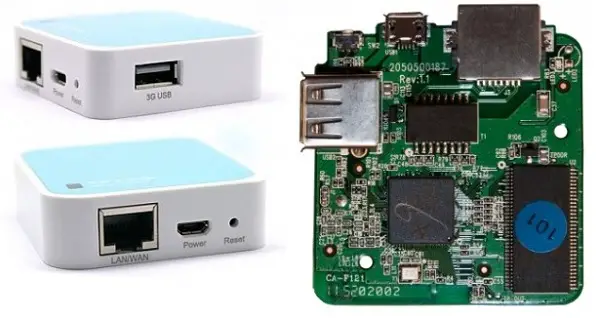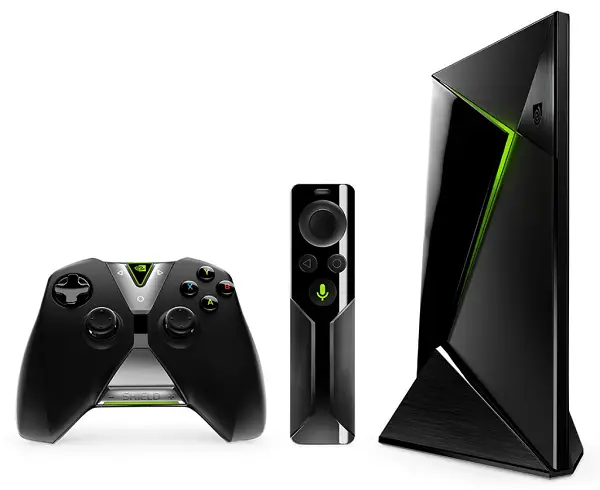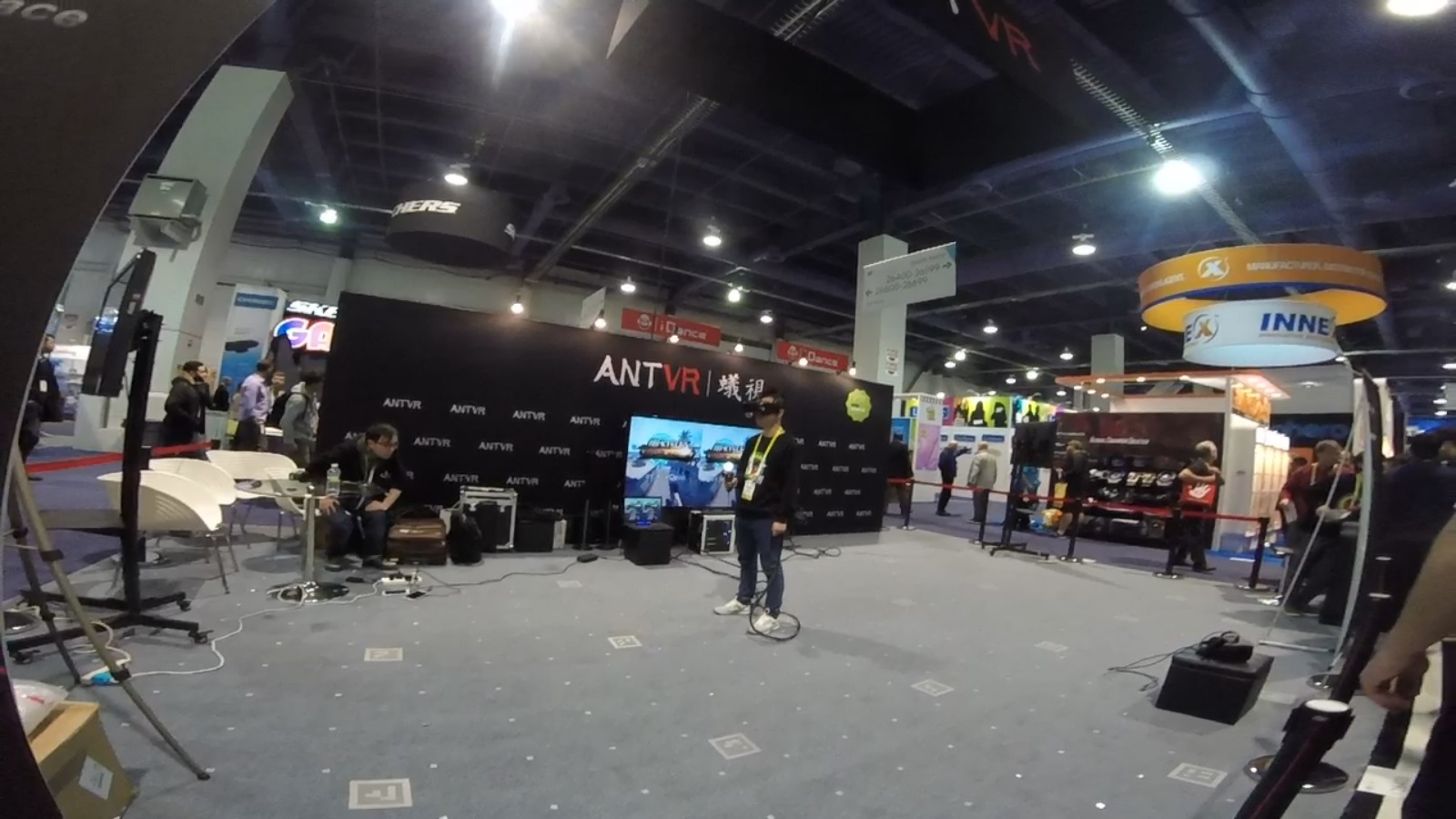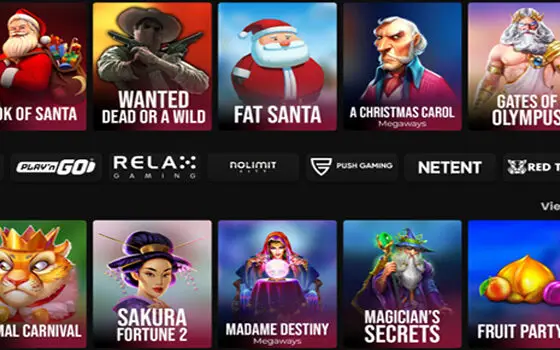I had a chance to visit International CES in Las Vegas this month to check out all the latest tech for the new year. After scouring footage of hands-on demos for Android-related gear, I curated this list of the best Android gaming tech and high-tech you need to know about.
YouVisit
If you’re just waking up to VR, YouVisit is the virtual reality version of YouTube. Whereas those $20 ViewMaster experiences you can buy at Walmart are professionally produced 8K UHD footage from NASA, National Geographic, and more, YouVisit is pro-am spherical footage compiled from early adopters of 360-degree action cams, 3D photography and more.
Though not technically a game, YouVisit is an immersive and innovative way to experience concerts, beach trips, plane rides, and other action footage from around the globe through ViewMaster, Cardboard, Milk VR, and other content libraries that are now being accessed by the general public. Whether noob or seasoned vet, YouVisit is an Android gaming hit that will certainly be filled with VR gaming footage upon release of the Rift and Vive.
Portal Router by Portal
Most VR experiences are tethered (Morpheus, Vive, Rift), but Android VR can be experienced on the go without having to drag along an expensive PC or PS4. Any PC gamer knows connection speed and stability is vital to winning online multiplayer, and this remains true on Android. With so many WiFi hotspots available around us, security is important as well.
Rather than relying on just your device security (which can be compromised by the NSA, retailers, and anyone with even minimal networking knowledge), Portal has a series of innovative routers and portable P2P solutions relying on the TOR concept of web browsing. This allows you to game and browse the web in peace no matter where you are.
HD is working on obtaining some test equipment and learning more info on Portal’s market availability, but what we do know is it works by changing frequency to optimize wireless channels automatically.
Remix Mini by Jide ($69.99 on Amazon)
Remix OS is a graphical user interface designed to emulate the classic Windows and Mac OS desktop on Android. The Remix Mini is a 1.2 GHz quad-core device with 2GB Ram and 16GB internal storage (expandable to 128GB via MicroSD).
Created for productivity, the Remix PC is a hand-held device capable of running productivity apps and the most Hardcore Android games on any standard PC mouse, keyboard, and monitor. My CES demo with designer Keating Leung showed the power of this mini Android 5.1-powered device, and I can’t wait to get my hands on it in the HD labs to experience some serious Android gaming.
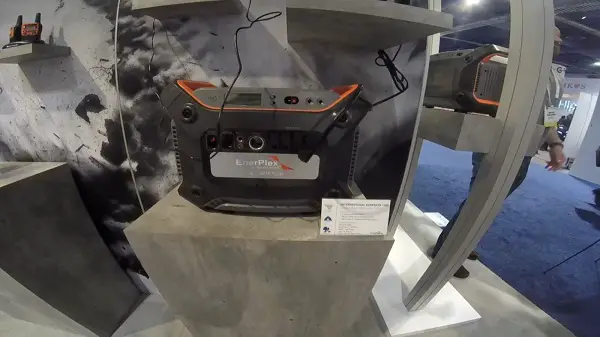
Generatr 1200 EnerPlex
The Generatr 100 is already available for $350 on Amazon, which is my favorite portable charging solution (outperforming offerings by Goal Zero, Grape Solar, Secur, and more). At CES, EnerPlex introduced their Generatr 1200, a portable 1232Wh portable battery capable of simultaneously charging 3 USB devices and 3 12V laptops.
The integrated inverter in the Generatr 1200 can accept dual charging via either an AC adaptor or EnerPlex’s Commandr and Goal Zero’s Venture series of portable solar chargers. Having used a few solar setups over the years, I can tell you Enerplex’s Generatr outperforms the Yeti 1500 from Goal Zero.
For keeping Hardcore Droid gaming running on the go, the Enerplex Generatr makes the perfect “base camp” solution, capable of charging any and all Android devices on this list at once (and the 100 can charge any of them as well, though only one 12V and 2 USB devices at a time, and with much less battery reserves on its smaller lithium ion battery.
Sky Viper Hover Racers by Skyrocket
Filming the press at ces showstoppers (:34)
CES Showstoppers presented quite a few jaw-dropping showstoppers throughout CES week in Las Vegas, one of which was Skyrocket Toy’s new lineup of AR drone-to-toy-to-life Sky Viper Hover Racer line.
Controlled by a proprietary gaming controller that houses an Android or iPhone, these drones are lightweight and come in a variety of sizes and speeds (all of which are well under FAA registration regulations).
More than just a standard RC racer, add-on QR disks add to this untethered augmented reality gaming experience, allowing games played through the Skyrocket app to feature add-ons, characters, vehicles, levels, and other in-game experiences similar to Lego Dimensions, Disney Infinity, and other popular toy-to-life games.
With deep experience in drones and RC racing, this drone experience is hardcore for anyone interested in toy-to-life, AR, or drone-based Android gaming. While not yet showcasing the full capabilities of untethered and wireless Android gaming, these Sky Viper drones are definitely a must-have Android accessory for 2016.
Telepathy Walker by Telepathy
Currently only available as a beta in Japan, the Telepathy Walker is the first generation of the future of AR-based Android gaming. Developer Takagi Kensuke told me at Pepcom’s Digital Experience that Telepathy (an experienced developer of augmented reality hardware) developed the Telepathy Walker specifically with Android gamers in mind.
He wasn’t able to reveal the developer when we spoke, but Telepathy is currently partnered with a major Japanese video game developer, and by 2020, expect AR gaming to be as prolific as VR is today. By that point, Android gamers in Japan will have 4 years of experience on what’s sure to be a deep gaming library on the Walker.
Air Hogs Connect by Spin Master
Executive producer Steve Robert demoed Air Hogs connect to me in CES’s Eureka Park. I was skeptical at first, having seen quite a few QR- and drone-based Android video games that amounted to little more than freemium garbage, however it soon became clear Robert is a seasoned video game developer.
As I watched the demo of Spin Master’s latest drone-to-toy-to-life AR-based Android game, it was immediately clear this differed from Sky Viper in that the console-level gaming will attract older gamers. At 35, I caught myself smiling in delight as I watched the drone traverse an entire QR code mat.
I imagine extra mats will be developed as new terrains over time, but tons of new levels and freemium add-ons can be included on each mat. For replay value, Air Hogs has designed the Most Hardcore Android RC game I’ve seen throughout my travels to CES, Super Mobility Week, VR Fest, E3, and PAX Prime.
Spro 2 by ZTE ($550 on Amazon)
There’s no shortage of smart TV devices on the market these days, but ZTE’s Spro 2 stood out at CES because of its sleek design. Running Android 4.4 (KitKat), this smart projector features a 5” touch screen, 2.26GHz quad-core Qualcomm processor, a 6300mAh batter, 2GB RAM and a 16GB internal hard drive.
Weighing only 19.4 oz, this tiny, Android-powered projector uses DLP technology to project a crisp screen perfect for gaming on any surface. 4G-enabled versions are available, though an unlocked WiFi version can be found as well.
ZTE makes great Android phones, and my time with the Spro 2 smart projector proved they’re focused on a quality digital multimedia experience anywhere with a blank canvas.
Shield TV by Nvidia (Available on Amazon)
If you’ve already played a Shield, you’re aware it’s one of the Most Hardcore Android gaming devices on the planet. Engineered by Nvidia (the company behind the premium 4k graphics cards necessary to power Rift and Vive), Shield TV differs from the Portable and K1/K2 tablets in that it’s designed to stream 4K UHD through a full-sized HDMI 2.0 port.
The smart device runs Android TV and Google Cast on the Lollipop (Android 5.1) OS and has an IR receiver compatible with Logitech Harmony.
Shield TV isn’t your average Chromecast device though – featuring two full-sized USB ports, Dolby 7.1 surround sound, a micro-SD expansion slot capable of handling 128GB, a Tegra x1 processor, 3 GB RAM, and a 256 (yes I said two hundred and fifty six!!!)-core GPU.
With full support to the Shield Games premium Android gaming library, the entire Google Play store, and the ability to stream your PC and Steam games through GeForce Now, Shield TV will easily remain one of the Most Hardcore Android Devices on the planet for years to come.
Starting at $199 for 16GB of storage and $299 for 500GB, it only makes sense to upgrade to the pro version, and both come with a Shield controller and optional remote. This Android-powered device is capable of gaming quality that competes with gaming consoles from Sony, Microsoft, and Nintendo.
Auravisor by Auravisor
The standout from CES 2016 is the not-oft-mentioned Auravisor, an Android-powered VR headset with a built-in screen so you don’t have to use your phone. The problem with high-powered VR headsets like Vive, Rift and Morpheus is they tether you to your couch. While you don’t necessarily need to be running around like you’re still playing a Wii, dragging your desktop around to show people VR isn’t feasible.
Auravisor’s headset makes VR gaming mobile and allows you to show anyone on the streets a much more immersive VR experience than Cardboard or any headset utilizing your phone. Though VR sets do exist that are designed for movie experiences, Auravisor allows you to experience 3D VR anywhere you want.
On top of this, the expandable microSD slot and ability to pair with a Shield or Xbox wireless controller makes Auravisor a viable solution for more advanced Android gaming experiences. I’m currently working out the details with HD, James Talbot at Auravisor, Cryptosphere, and Defcon to discuss promoting homebrewed Android gaming development on Auravisor.
The only real competition to this headset is Razer’s OSVR, which has picked up a fervent following from home-modders in the PC master race. Once Android homebrewers and emulation gurus get ahold of Auravisor and pair it with Nvidia’s Shield TV, it won’t be long before you start seeing emulators pop up for Steam VR, Morpheus VR, and other VR gaming libraries.
While you may not get the full quality of graphics possible out of Android devices, you’ll still be able to enjoy 4KUHD and console-quality virtual reality on Android devices. Auravisor is the first piece to that puzzle.
-
SCORE
-
SCORE 2


















